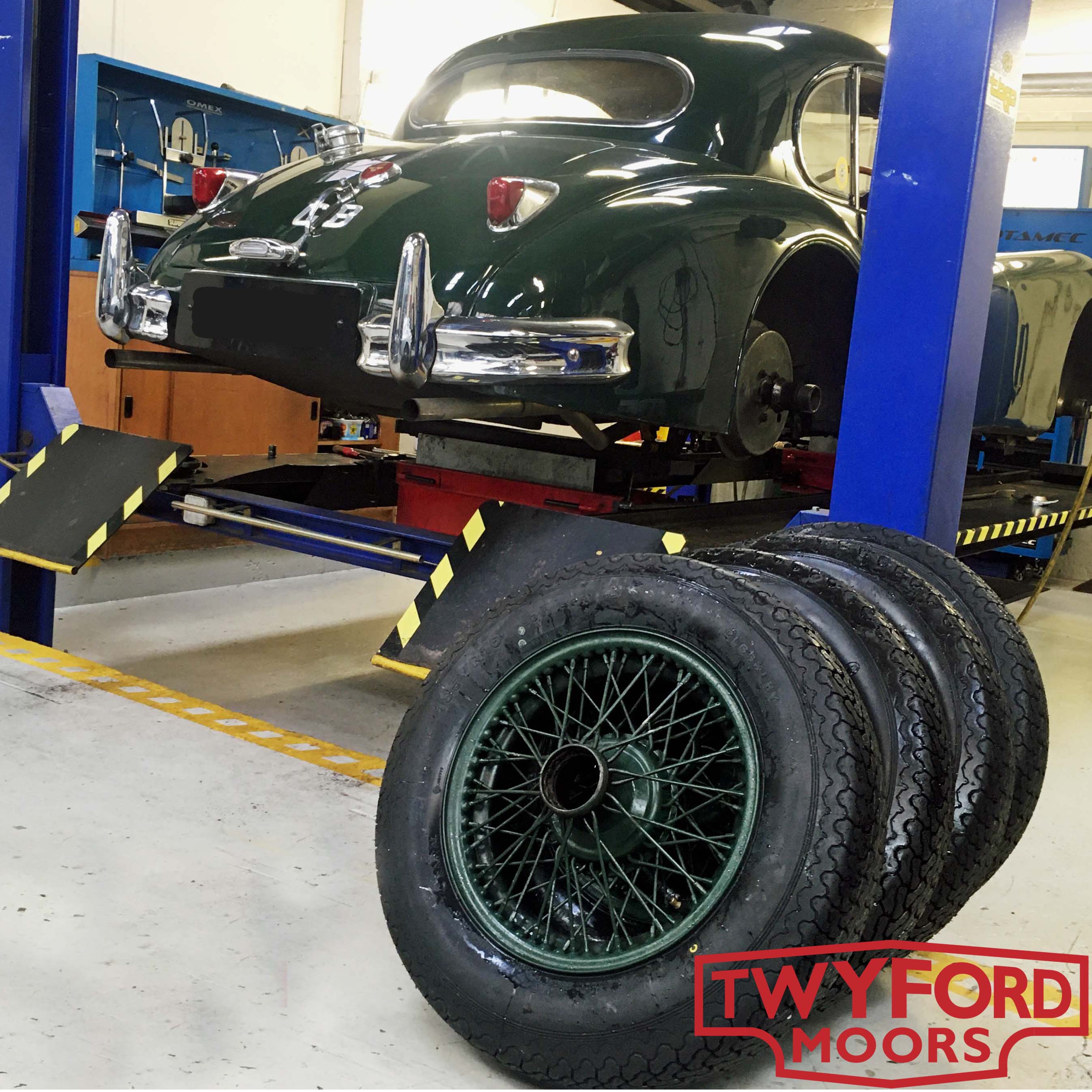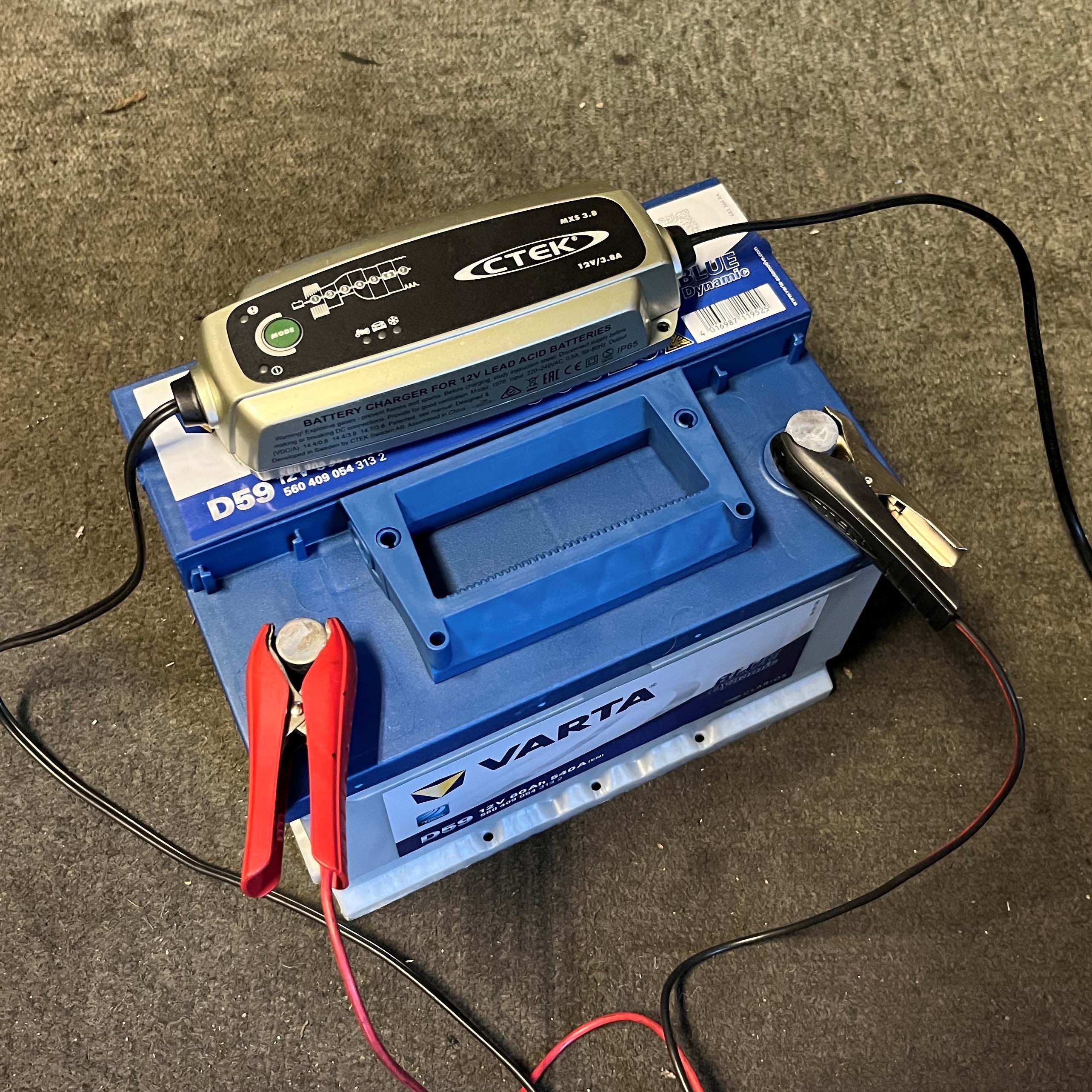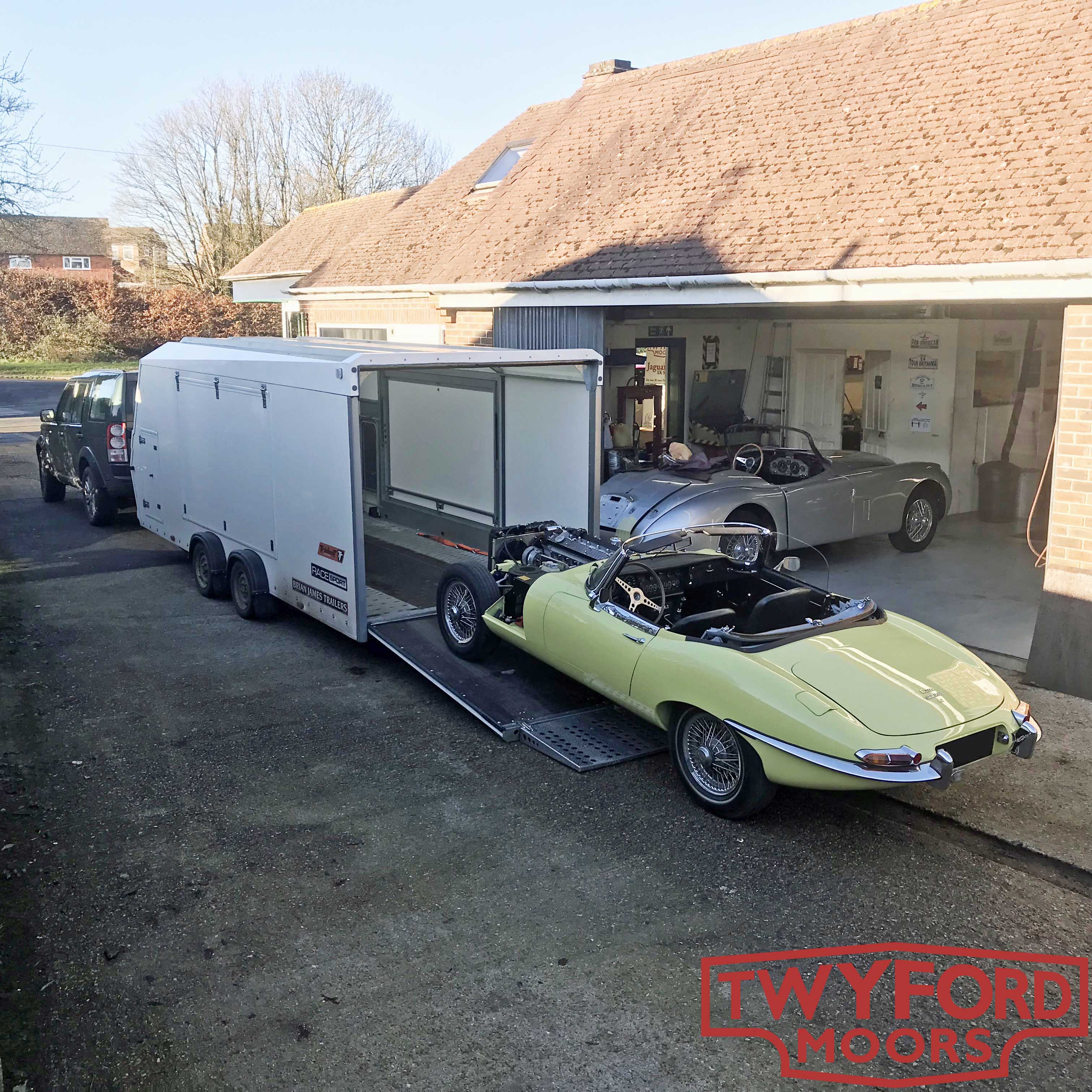Storing Your Classic Car
With the driving season coming to a close many of us are looking towards putting our cars away for the winter. Although putting a car into storage may be considered as simple as parking it in a garage, we believe there are a few other factors worth considering. This list is by no means definitive and if you have a tip you think we have missed please let us know. We can also offer a range of secure storage options so please get in touch if you are looking to keep your car in top condition this winter.
The Garage
The first step is to consider where the car is to be stored. Some barns are perfectly adequate to store your cherished classic over the warmer and dryer months but may not be suitable for the winter. Damp storage conditions can do considerable damage to a car, particularly underneath. It is now commonplace to use dehumidifiers or heaters to regulate the temperature. We find that infrared panels work very well in garages as they heat the objects rather than the air so if there is a slight draught it doesn’t lose heat. Gas space heaters are not ideal as they produce a lot of moisture. The key here is the keep the environment stable. If it heats up and cools down rapidly you will get condensation so it is better to have a consistently cold garage than one which gets hot when the heaters come on and then cools down again.
Open storage is not the end of the world but obviously has its drawback as dust and leaves etc can be blown in. This is, in our view, preferable to enclosed but damp storage. Airflow will help keep the car dry and in turn, reduce the risk of corrosion.
Another issue we often see from cars in storage is damage caused by animals and insects. As the colder months come around mice or even rats will look for warm places to nest. A favourite spot on XKs seems to be the rear corners of the hood where there is plenty of wires to sharpen their teeth on. Moths are another major issue and we see many cars with damaged carpets and headlining. Please keep an eye out for signs of such things in your garage.
Is the car clean?
It may not seem worth the effort but cleaning your classic inside, out and even underneath before putting it away is time well spent. Road dirt, mud and acidic compound from the air or rain which you might pick up over the course of the year can damage paintwork, and chrome and hold moisture to the underside of the car causing corrosion. Giving the car a good clean and a coat of quality polish will not only remove anything unwanted but protect the car over the winter. It is worth letting the car dry thoroughly outside before parking it in the garage to minimise the moisture you introduce to the area the car is being stored. The car being clean also makes it easier to spot signs of mice or moths inside the car.



Car covers
Car covers are the subject of much debate. Do they trap moisture? Should you use a breathable waterproof cover? Can they rub the paint?
This really comes down the personal taste and the environment in which the car is to be stored. In a dry garage on a clean car a well-fitted, soft cover is worthwhile to keep the dust off the car. For cars in damper environments, we would recommend against the use of a cover as these can trap moisture to the paintwork. Likewise, in particularly draughty garages, we would shy away from loose-fitting covers as these can move and rub the paint over many months. One other important note is to only cover a car once it is cool and dry after a drive. Do not fit a cover straight after bringing the car back from a drive or if it is slightly damp.
Check and top up fluids
It is worth taking a moment to check and top up your fluids. Knowing that your engine oil and brake fluid levels are correct when you put the car away will give you peace of mind when getting the car out again in the new year. It also allows you to accurately measure any fluid loss over the winter. More important is to check your coolant level and antifreeze strength. Antifreeze has two functions. First, to lower the freezing point of water so that if winter temperatures drop below zero the coolant in the engine doesn’t freeze and crack the block. Secondly, it contains a number of chemicals to stop corrosion in the engine and inhibit reactions between different materials such as aluminium and iron. This is all the more important when the car is going to be standing for a long period of time.
Fuel
The subject of fuel has always been a hot topic but was never more so than now with the introduction of E10 petrol (fuel containing up to 10% ethanol) in the UK. The first and most simple bit of advice we can give on this subject is not to use E10 fuel unless you need to. Most garages carry a premium option these days which remains E5 (5% ethanol) so we would recommend using one of these, particularly if the car is going into storage. In the South of England, Essos premium unleaded is said to contain no ethanol although the pumps still label it as E5. We have a soft spot for Shell V-Power.
When a car is stored with fuel in the tank for a long period the fuel can ‘go off’. Fuels containing ethanol can react with moisture in the air and can become acidic causing damage to any number of components. There are additives which can be added and claim to stop this however this subject is so broad we cannot go into it here. Our best advice to avoid such reactions would be either to store the car with a minimal amount of fuel in it, then periodically start the car up to use some of the fuel and top it up again with fresh fuel. If this isn’t an option one might consider filling the tank right up to minimise the surface area in which fuel comes into contact with air thus minimising any chemical reactions.
One final note on fuel is that Angelo American Oils produce an ethanol-free storage fuel. If you have any reservations about storing your car with fuel in the tank you really cannot do any better than this.
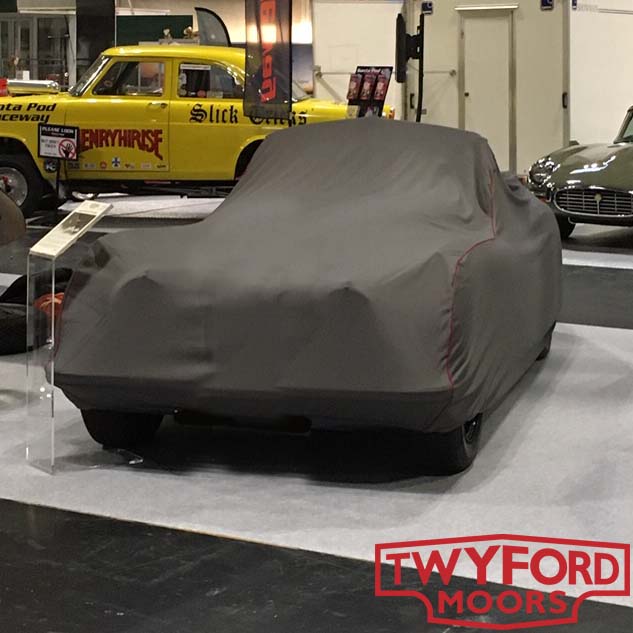
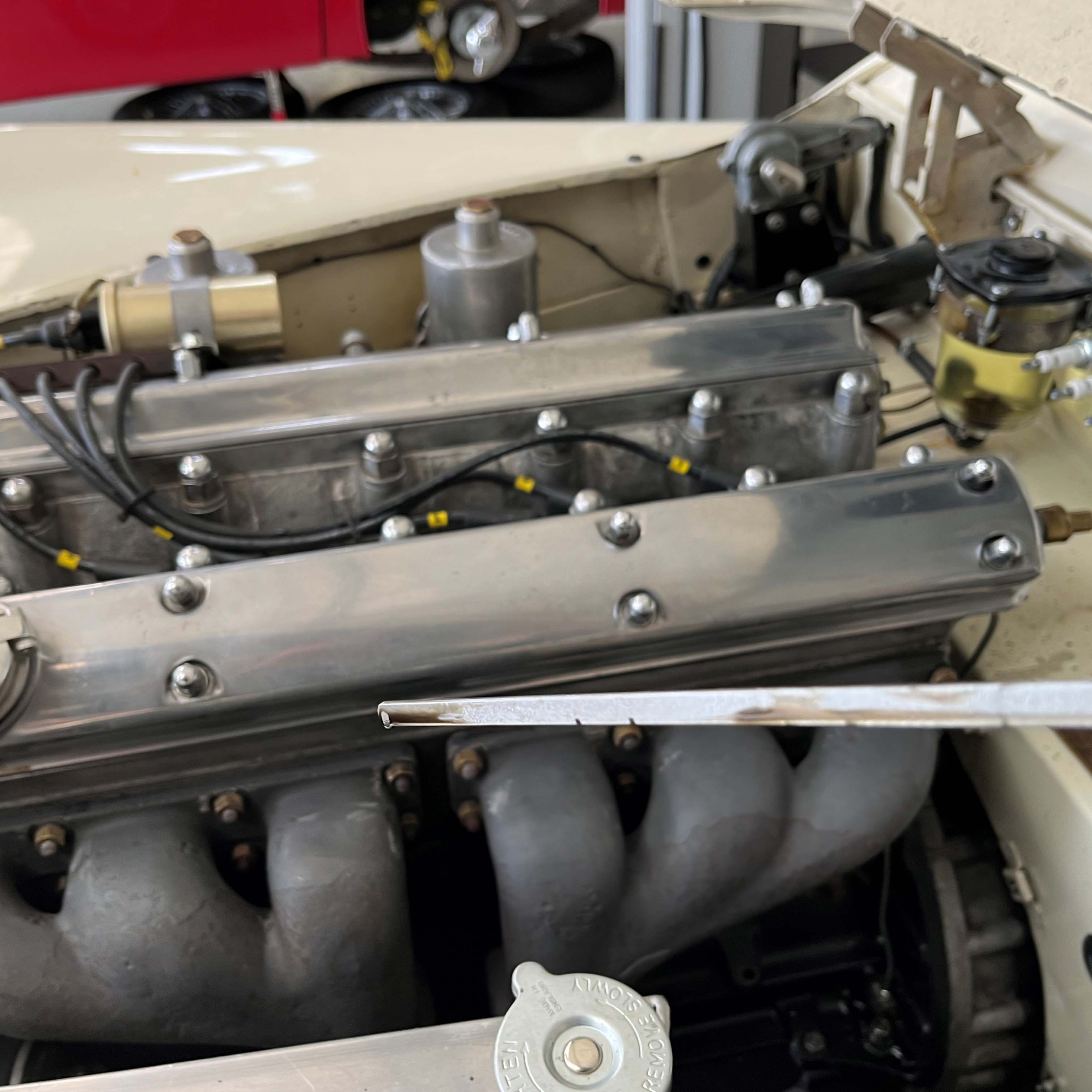
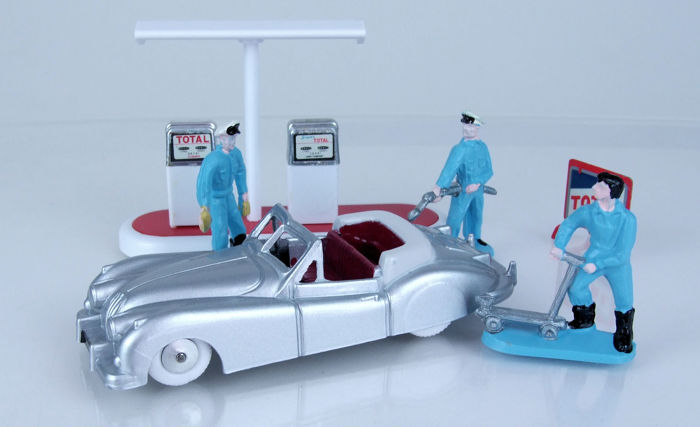
Tyres and tyre pressures
Tyres are another much-discussed area when it comes to storing a car. Some say you should over-inflate your tyres to avoid flat spots. Some advocate putting the car up on stands for the same reason. Our advice would be to ensure your tyres are inflated to the correct pressures. To avoid flat spots simply ensure the car is moved at least once a month. By moving the position of the car by a foot or even by moving it out and back in again you can ensure that pressure is not on the same part of the tyre for too long. All that being said I cannot think of an occasion I haven’t experienced a car with flat spots on modern radial tyres so perhaps this is an issue confined to the past or something you would only experience if your car runs on cross-ply tyres.
Battery conditioners/chargers
If you have access to power a battery conditioner or trickle charger is well worth the investment. A good battery conditioner will keep your car’s battery in top condition thus extending its life. More importantly, there is nothing more disappointing and frustrating than planning a trip out in your classic car and finding it won’t start.
If you do not have access to power there are other measures you can take. There are many 12v solar panel chargers on the market, largely marketed for campervans, which could be used to keep your battery topped up. These are looking ever more appealing with the cost of electricity going up. Alternatively, you could simply disconnect your battery which will do away with any risk of the car discharging it. Before disconnecting your battery please first consider if there is anything fitted to your car which requires constant power such as a tracker system.
Move it and use it
The best thing you can possibly do for your classic car over the winter is to drive it. If you can find a few dry and salt-free days throughout the winter to get the car out, warm it through, test the hydraulics and blow off the cobwebs this will really help your car stay in top usable condition. We find that cars which sit without any movement for six months are usually the ones which require the most work in the spring. If getting out for a drive isn’t practical at least try to start the car up, move it outside if you can and operate the brakes, clutch and steering. Let the engine run up to temperature and then cool down again.
Recommissioning after winter
This is potentially the most important recommendation we will make. If your car has been off the road for a prolonged period there could be any number of issues that have developed over this time. From perished brake seals to fuel lines breaking down due to ethanol in fuel we have seen it all and often these faults are not immediately apparent. They can however become dangerous over time. Clearly, many such issues can be avoided by taking the above steps but we appreciate these are not always possible or practical. Recommissioning after winter storage is a broad subject and we will publish a full article on the subject early next year but if you would like further advice please do get in touch.
The bottom line
We appreciate everyone’s storage circumstances are unique with variables including the amount of time the owner has to spend on the car, the structure of the building, the availability of electricity and even the weather from year to year. The above steps have hopefully provided some ideas and guidance on how to go about storing your car but if you require more specific advice please do get in touch. Likewise, please contact us if you would like to have your car stored safely with us. We can also provide safe, covered transport to get the car to and from your home address if it is not convenient for you to bring your classic to us yourself.
Our final call to arms would be to get out there and use your classic as much as is practical. Even in the winter months try to take advantage of those wonderful crisp, dry, sunny days and enjoy your car. It will be all the better for it!
